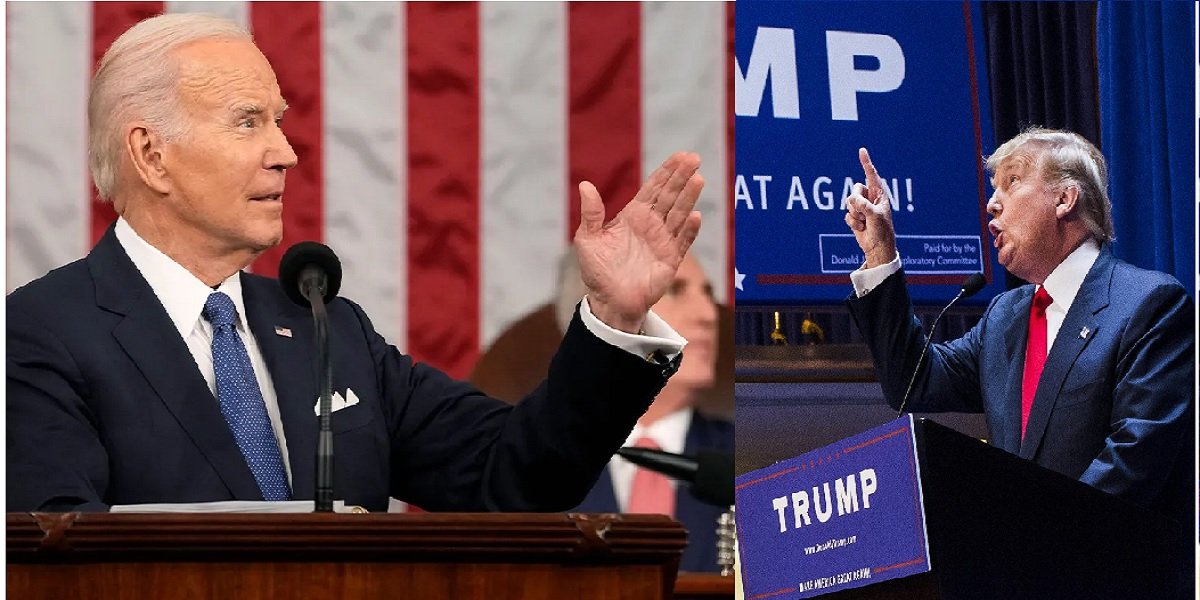Table of Contents
ToggleBiden Vs Trump Economic Journeys
Exploring the financial legacies of Presidents Biden vs Trump unveils a tapestry of contrasting rules, challenges, and outcomes. This evaluation delves into the intricacies of their administrations’ affects on key economic indicators, losing mild on the divergent paths taken and the consequences for the nation’s economic panorama.

Job Gains
Under President Biden’s stewardship, the economy witnessed a great surge in task introduction, including over 14 million positions in much less than three years, with a monthly average exceeding 400,000.
In stark assessment, the Trump technology first of all saw regular however extra modest process profits, averaging round 176,000 consistent with month. However, the onset of the pandemic-induced closures caused a seismic shift in employment dynamics, underscoring the vulnerability of the hard work market.
Unemployment Rate
Biden’s tenure noticed a commendable decline within the unemployment rate to a few.7%, reaching historical lows throughout numerous demographic agencies. This marked a continuation of effective developments from the pre-pandemic era.
Conversely, Trump achieved a remarkable milestone with a three.5% unemployment rate, signaling a sturdy labor marketplace earlier than the pandemic upheaval disrupted monetary equilibrium.
Economic Growth
Comparing GDP growth, the Biden management witnessed a strong growth of approximately 22%, outpacing the 14% growth recorded for the duration of Trump’s presidency.
However, the latter confronted the extraordinary project of steering the economy through a deadly disease-induced recession, shaping the trajectory of economic overall performance for the duration of his tenure.
Gas Prices
The contrast in gas prices under the two administrations underscores differing energy policies and market dynamics. Trump’s tenure saw relatively stable gas prices, while Joe B’s term witnessed a significant increase, reflecting broader shifts in energy markets and policy priorities.
Inflation
Both administrations grappled with inflationary pressures driven by extensive stimulus measures. While Trump maintained relatively lower inflation levels overall, Biden’s presidency faced inflation challenges, impacting real earnings despite strong nominal-wage increases.
Wages
Under Biden, nominal-wage increases were robust, albeit tempered by inflationary effects. Conversely, Trump’s presidency witnessed a surge in average wages propelled by post-pandemic labor market dynamics, highlighting nuanced shifts in income distribution and workforce composition.
Employment Rates
Biden’s economic recovery efforts outpaced Europe’s post-pandemic rebound, demonstrating effective policy responses and resilience in the labor market. The employment rate performance under Biden was perceived as a continuation of positive trends established during the preceding administration, underlining the interconnectedness of economic policies across presidential terms.
Deficit
Both administrations contributed to escalating deficits; however, Biden’s deficit was relatively smaller as a share of GDP, reflecting economic recovery measures and reduced federal COVID spending. This underscores the importance of fiscal management strategies in navigating economic challenges and sustaining long-term fiscal stability.
Stock Market
While the S&P 500 index witnessed robust growth during Trump’s early days in office compared to Biden’s term, it’s essential to acknowledge the limited influence of presidents over stock market performance. External factors and market dynamics often exert significant influence on stock market fluctuations, shaping investor sentiment and market sentiment.
Crime Rate & Climate Change
Biden’s administration prioritized green energy initiatives and enacted significant climate change legislation, diverging from Trump’s approach. Moreover, trends in crime rates exhibited fluctuations under both administrations, with Biden’s tenure witnessing a decline, indicative of broader shifts in law enforcement strategies and social policies.
Conclusion
In conclusion, the juxtaposition of Biden’s and Trump’s administrations exhibits a nuanced interaction of rules, demanding situations, and effects that have fashioned the nation’s financial trajectory. While every presidency confronted specific occasions and priorities, knowledge these distinctions is essential for knowledgeable discourse and policymaking in navigating destiny monetary landscapes. By unraveling those financial contrasts, policymakers and stakeholders can glean precious insights to inform powerful strategies for promoting financial resilience, inclusive, and sustainable increase.










